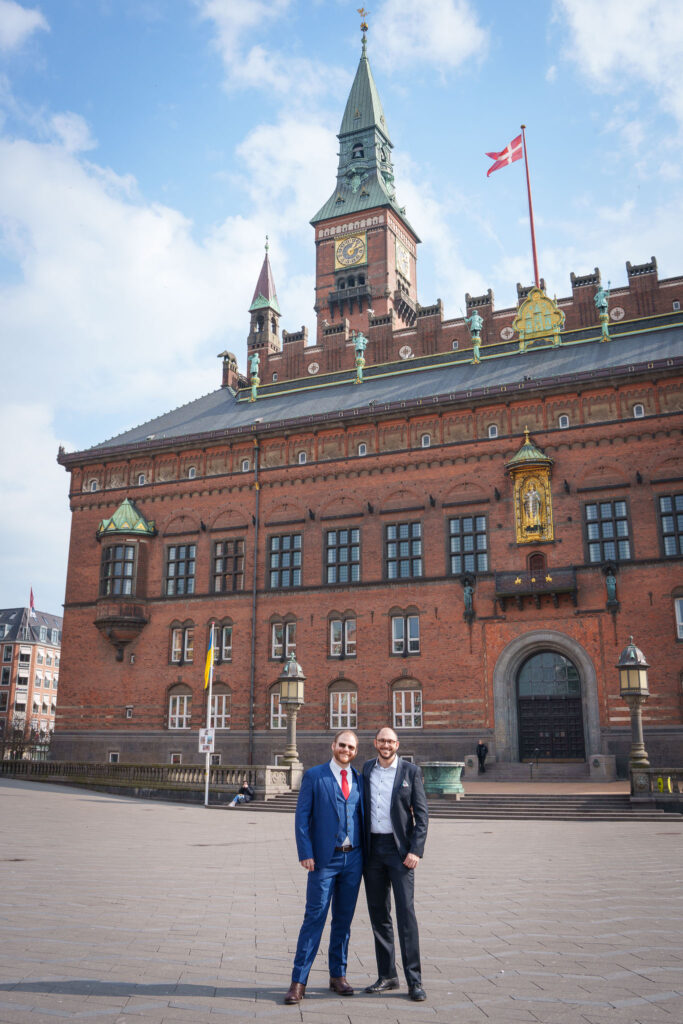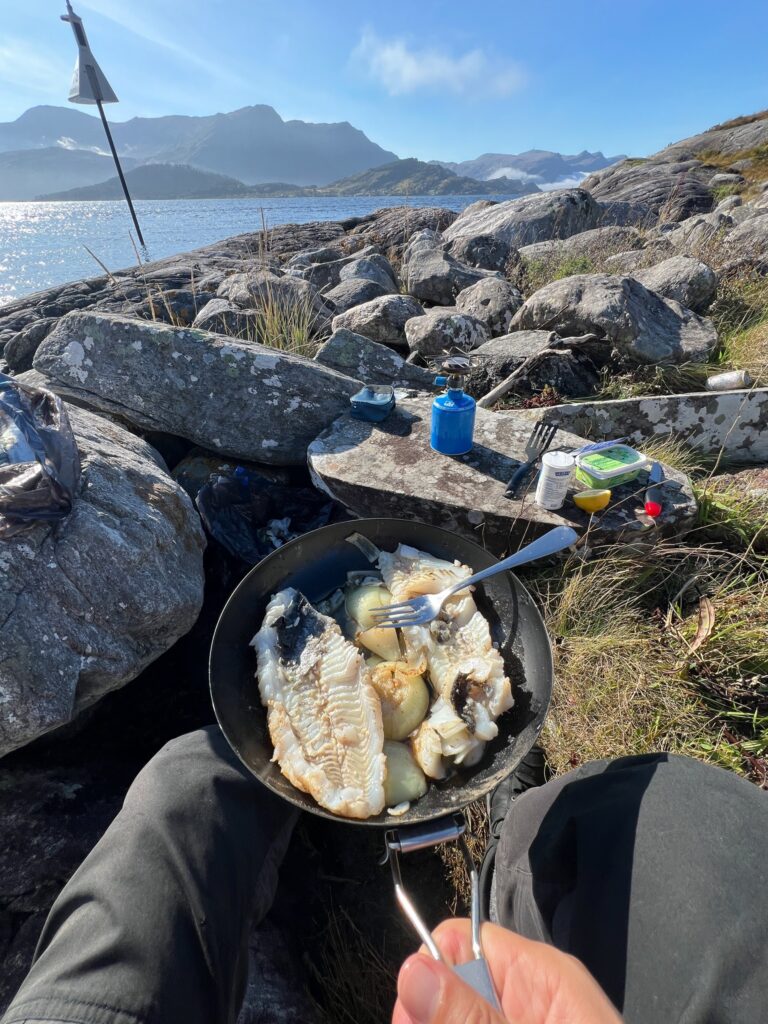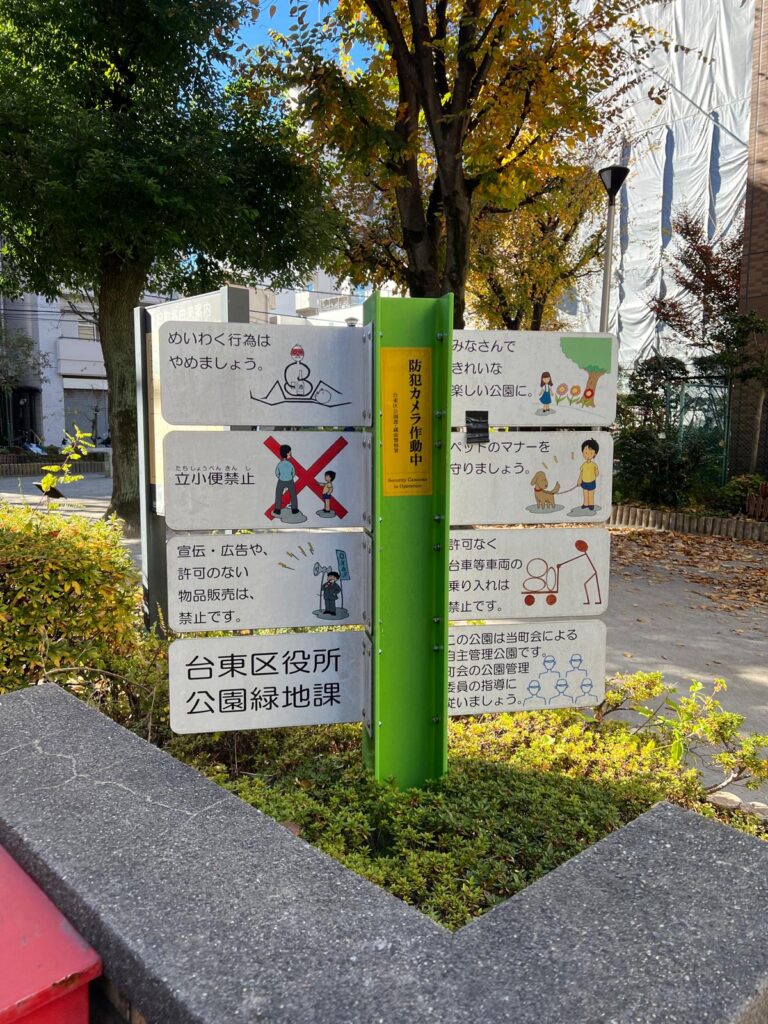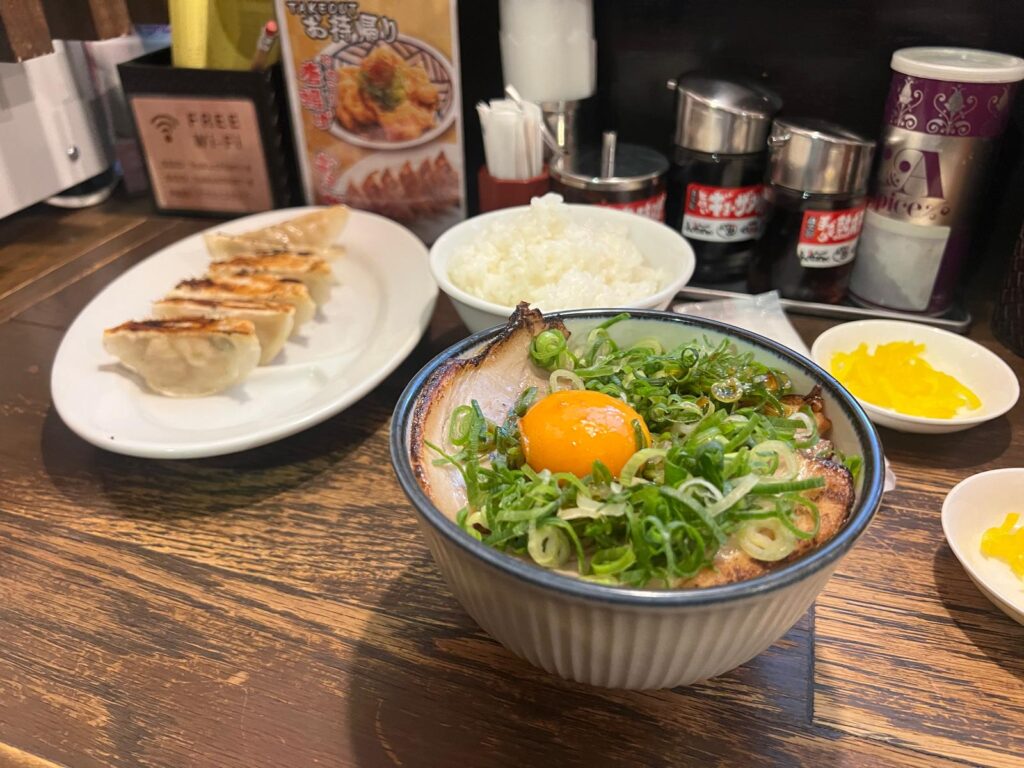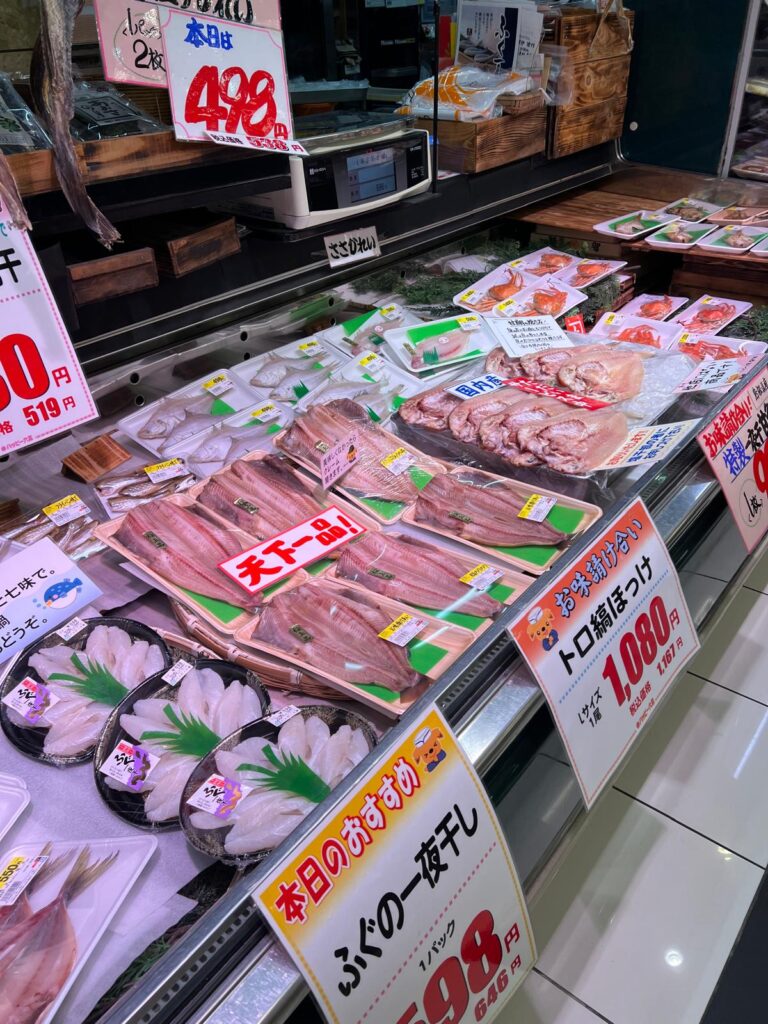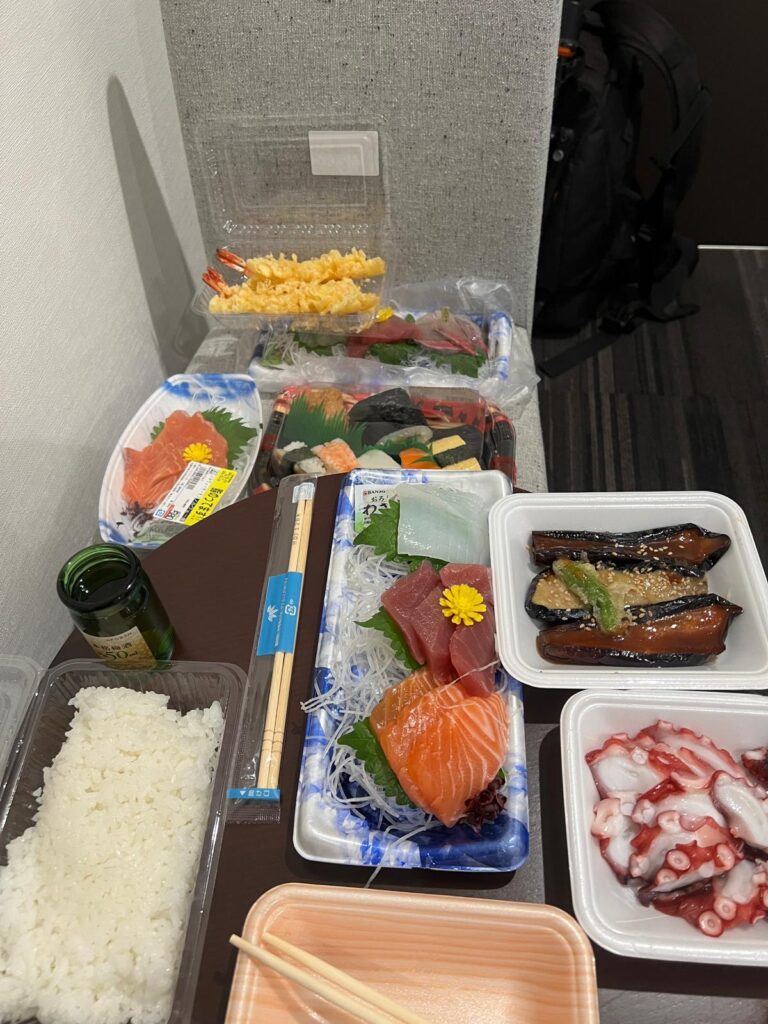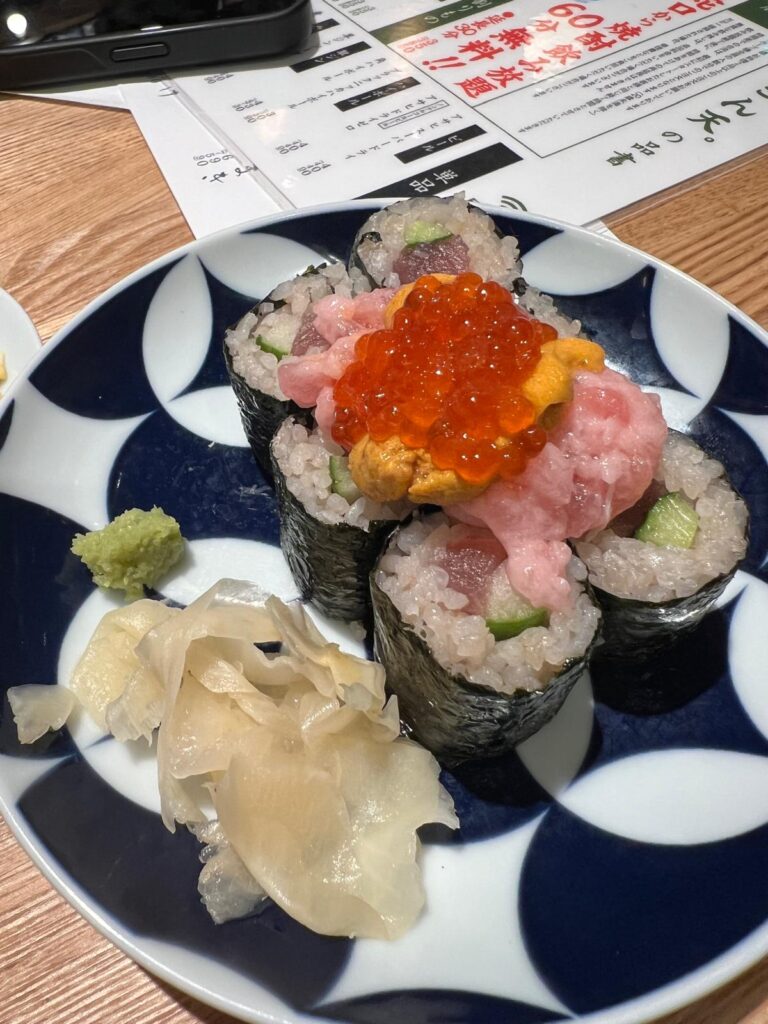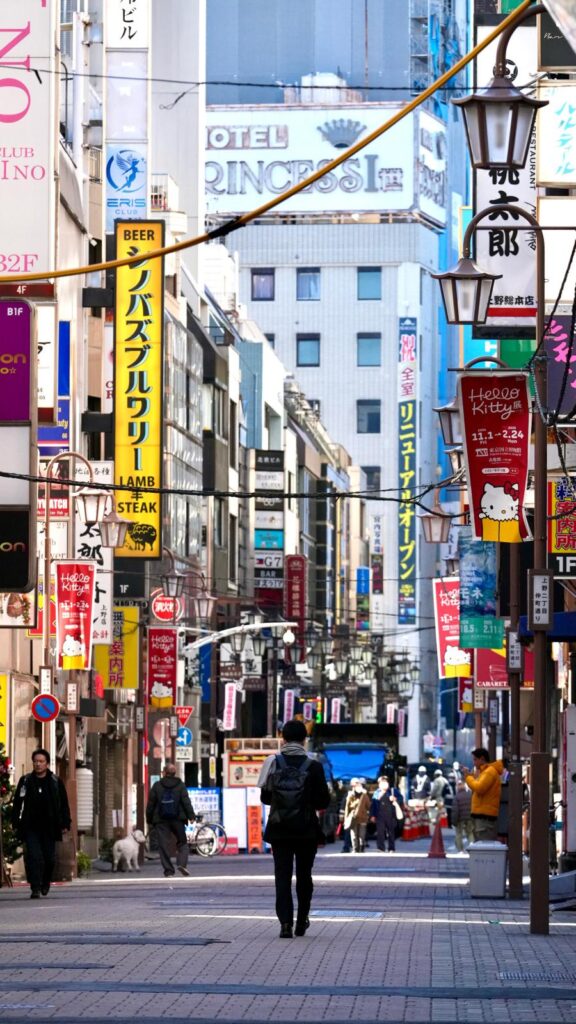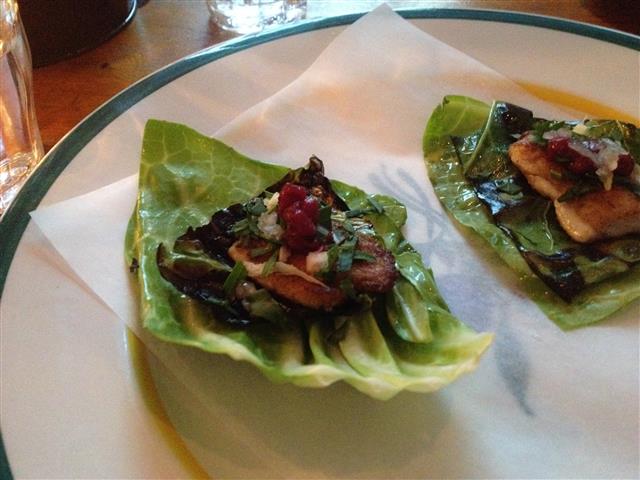Turning 40 – Reflections on Success, Travel, Generalism and Relationships

If I’m honest, I can’t quite believe 40 is already here. For years I’ve used it as a mental waypoint somewhere in the distant future. A mental marker to deflect or defer societal pressure while at the same time continuing to do what feels right in each moment. Now that it has arrived, it’s a good moment to do a mental check in and engage in a process I try and do every birthday; to ask myself who I am today, who I was yesterday, who I want to be tomorrow and if I’m happy with that man.
Last year I wrote “Balance remains a challenge, but one that comes from a focus on intentionality as I work to protect energy for spaces, activities, and people that bring joy and growth while letting go of old narratives, hobbies, and habits that I’ve outgrown.” and while I’ve made progress here – this is very much still a key theme for me. But more on that in a bit.
What’s this post? As some of you have now come to anticipate – every year I publish a birthday reflection post. I hope you’ll enjoy these thoughts and take them for what they are – an attempt to share the world as I see it and how I relate to it. It’s a mixture of observations, musings, reflections, and advice. They’re extremely long and by all rights if I just broke them up into individual posts, I’d have more than 4 posts a year. But, this is the approach I’m sticking with and which actually gets pen-to-paper. Skip around, jump to what looks interesting, or take it from cover to cover. Your call =)
You can view my 39th birthday post here, 38th birthday post here, 37th birthday post here, 36th birthday post here, 35th birthday post here, 34th birthday post here, 33rd birthday post here, 32nd birthday post here, 31st birthday post here, my more detailed 30th birthday post here, my musings on turning 29 here, or 28 here. As well as a long-forgotten blog post written on my 23rd birthday (wow, have I really been blogging that long?) which you can view here.
Not to distract before we’ve even begun – but I also want to share a recent podcast I did with Matt Payne on F-Stop, Collaborate and Listen where we talk life, entrepreneurship, photography, and the creative journey. Watch it on YouTube, or find Matt’s beautiful summary and links to the podcasting platforms here.
Topics in this post:
Note: This post is LONG *as they always are). At 13440 words it is an extensive read. If you want a more approachable way – open it in Edge, right click over this text and click “Read Aloud”.
- Checking in with myself
- Turning 40 and becoming an uncle
- Creating space for connection
- Trained curiosity
- Remember to play
- Working to avoid stress burnout
- Contrarianism without integrity and creation is not innovation – it’s merely exploitative extraction
- Flawed incremental thinking is a gateway to enormous harm
- Consistency and coherence
- Empathy as the source of morality
- If it was another decade, who would they be?
- Continuing my critique around the toxicity of Rogan, Peterson and others
- ChatGPT (and others) as great sparring partners
- Ask vs. Guess culture
- An update on past and future books
- I finally made it to Japan – it’s silly why it took so long
- Final thoughts and gratitude
Let’s dig in…
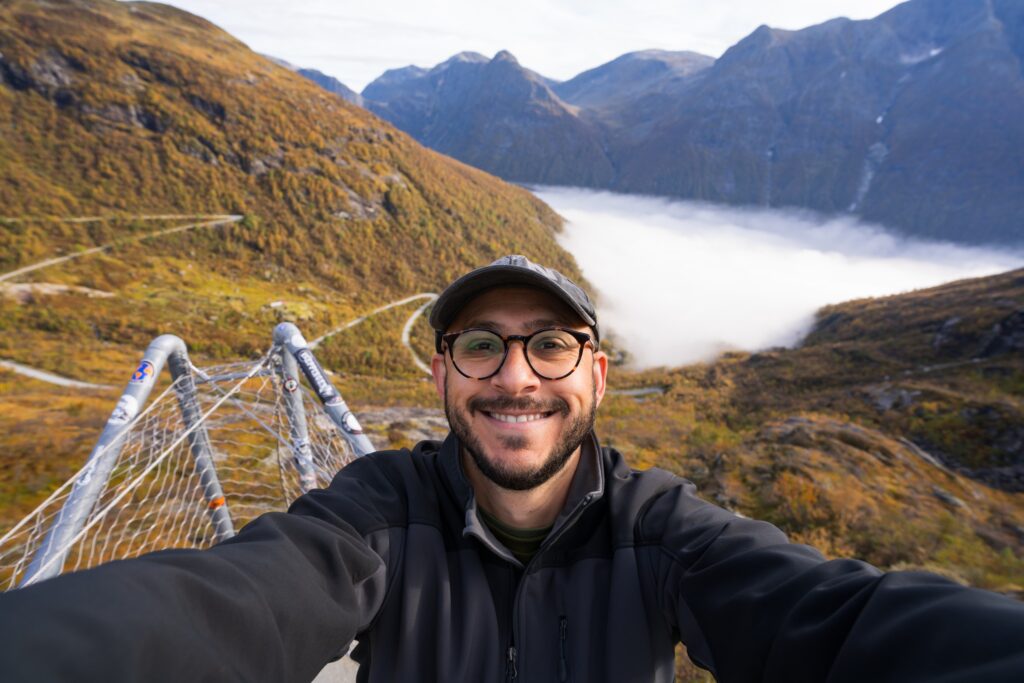
Checking in With Myself
One of the things I love about a birthday, especially a birthday like 40, is that it’s a great opportunity to step to the side and introspect even more deeply than usual. Do, I like who I am? Do I like where I am in life? Do I like the things I’ve done? The direction I’m heading? More than that, I ask myself – if I stepped out of the door today and got hit by a bus and died, would I feel like I’d have lived a life well lived? And while I feel I’ve only begun to scratch the surface, when I look in the mirror today – I feel I can say I’d be content.
I view life as a rich tapestry being woven, and the sum of who I am, as the blending of threads of experiences, decisions, values, achievements, and relationships. Increasingly, and as I’ve written about in the past, I have also come to believe that we will experience the same situation very differently based on our age, and where we are in life. While in some areas that seems common sense, in others – such as travel and how we engage with and experience and perceive and are changed by a place it’s a bit less recognized. This also gives me a sense of urgency but also delight, knowing that even visiting the same places or experiences will evolve naturally as I do.
So, how is it going? 50+ countries and since January 2024 I’ve visited England, Germany, Spain, Slovenia, Italy, Norway, Japan, Mexico, Arizona, Sweden, Lithuania, and Finland for work and pleasure. I’m at 13.5 years lived abroad, 1.5 books written, 10 very successful years in my current work role, 29,500 photos published, hundreds of thousands of words written, and a sea of creative projects paired with a wealth of incredible friends. Love still alludes me – but the journey itself is a delight.
Beyond that – I am proud of who I am. Of my adherence to my values, and my understanding and introspection at a deep level about what they are and what matters to me. It’s a constant journey to be fair with myself, while pushing myself to improve, to grow, to challenge and update my beliefs, attack my biases, and seek out new paths to growth. And yet, I find that I’m content with that balance.
Where I need to establish better balance once again is in nurturing my creative self by returning work to a level that leaves me creative and social energy to not just maintain, but to nurture projects and new relationships. Clear back in my 35th birthday post I wrote about how I approach work/creative/relationship space and energy. I often reflect on that breakdown as I navigate my day-to-day work. Finding balance in general is always an extremely tricky thing. It often feels a bit like a snowball rolling down the hill, gaining momentum, and size with each rotation.
This past year work has definitely taken an increased amount of space, time, and mental energy. That culminated in the last 3 months where we brought to market one of our largest releases in several years. I expected my January, February and first few days of March to be intense and all consuming. Luckily, I’ve prioritized a workplace, industry, and country that values work-life balance and reasonable hours. But, even at that, the hours started to slip, a few tasks bled into the weekend, and the productive moments during the day – those that require intense energy and focus – grew leaving my remaining mental and social energy greatly reduced.
The task for myself now – and one I’ve anticipated since October – is the need to dial that back to a normal healthy balance. To focus on being productive and delivering at a top level – but one that also protects my space for balance. Quite frankly, it’s not easy. Especially because there’s always one more excuse to re-engage, one more pending task, one more last minute project that needs to be addressed. Beyond that, if you’re a very skilled specialist, or a highly competent generalist – there’s always a surplus of work waiting on the wings. It’s easy to feel guilty, to feel the imposter syndrome rage, to push yourself to stretch and to easily justify each new stretch and the momentum. But ultimately, I think of a few thought exercises I now regularly reference. One of these is in the form of our internal battery.
Turning 40 and Becoming an Uncle
2024 ended on a pivotal note – I became an uncle! It’s an exciting moment, one that in so many ways is world changing. On many levels, I’m still processing it. As the oldest sibling with older parents, it’s an interesting thing to experience so much later in life. Expanding families into the next generation is often an organic part of growing up much earlier for others who might welcome their first niece or nephew in their 20s. There is an interesting divide between the perception of what it will mean, the stories about it, what you see friends navigate, and then, the reality of the moment when it arrives.
I am so profoundly proud to watch my brother step into the role of parent. The way he nurtures his daughter, the way he’s there as a gentle giant and protector. How he continues to evolve in his role as partner, and reflect on how he will use the lessons from our own upbringing and integrate them into his approach. Seeing his child grow, watching how her perception starts to take shape, her eyes sharpen, and her attention evolve from week to week is wonderful.
Beyond that, there is profound beauty in being able to watch our mom and dad engage with her and her parents as they prepare to make the journey across the Atlantic to meet her in person. They have always been incredible about not pressuring us, about giving us our space, and fostering our happiness. But, while being older parents brings many benefits in the form of financial security, better knowledge of yourself, and coming at life with experience and maturity – it also brings a difficult shadow side. At 85, I know Dad had started to wonder if he’d have the opportunity to meet a grand child – to see how David or I might continue the journey – and to have the opportunity to contribute to that directly.
As I welcome 40, I find it’s a powerful mirror to look into. I’ve written in past years about my sense of restlessness, my curiosity, and my focus on a – let’s face it – fairly selfishly lived experience. I relish the time I have at hand, I love the projects I work on, the freedom and flexibility to travel at the drop of a hat, and the flexibility my resources give me. And yet, I know there is profound beauty in parenthood. That there is a deep joining between a sense of co-creation and co-experience, and that many of those things I treasure would evolve – not be replaced.
And so I find this a great moment to step back and consider … Does meeting my niece make me feel an increased sense of urgency? A reduced one? As a male, I potentially have more viable years ahead than my future female partner. After all – Dad was 46 going on 47 when I came along and 2.5 years older when David arrived. Throughout my twenties and thirties, I have always told myself I’d start to be more intentional about finding a serious partner when I entered my 40s. In reflection now that I’m here, I can’t say I feel any closer or more ready.
It’s not that I’m not open to it, it’s more that in the incredible women I meet, I find pieces of what I’m looking for but those pieces remain insufficient to conquer the value I place on my own experience. They are additive as part of a bundle of deep conversations and varied personalities, but also overwhelming and restrictive in the context of a single committed partner to whom I can commit myself fully and build a collaborative deeply intertwined future. And I think that too is part of my challenge. I prefer one extreme or the other. To fall in the middle in some version of compromise has always been deeply unappealing to me. And yet, I also know that it is on me to create space and intentionally foster the potential for that right connection. The amount of effort and receptiveness I invest will directly shape that outcome.
In meeting my niece, I see the beauty of the moment. The incredible tiredness of her loving parents, but also the transformation. From a selfish perspective, there is a sense of loss for the special relationship and experiences my brother and I shared before – but also a sense of gain in how that deep friendship and relationship continues to evolve and grow even richer with this new child in our lives.
In these first few months I also feel a sense of uncertainty on how best to support my brother and his wife, how to best be there, and how also to push myself to overcome discomfort or uncertainty. I visit, check-in, to bring small meals, create space to talk, and cluelessly visit pharmacies or baby stores around the city in the pursuit of some doo-dad or doo-hicky for a breast pump. There is subtle mirth in older women’s eyes at my inept questions and lost-puppy confusion. In these ways, this little one is already teaching me so much and forcing me to grow – even before she’s said her first word.
Seeing the overwhelm, the sleepless nights, and the learning process of raising a newborn, in these early months I also have gained an even deeper level of respect and awe for the women I know who have done it on their own. To think how they’ve navigated it is deeply humbling and a level of achievement and resilience which I cannot even begin to put into words. For those doing it outside of Denmark where the systems are even worse – I cannot even fathom how it is possible.
So, where does that leave me? I’m not sure. I am still digesting it, still settling into the new role, and all the lessons and insights that it brings. I am delighted by my new role, to gain a sister-i- law, and a niece who I cannot wait to help share the world with. And at the same time, I am perhaps more restless today than I was before – not more settled. I am less certain of what I want in the long term future, but more certain that I am not yet ready to take on that journey myself. For now, I’ll continue to be receptive – but focused on my own adventures, my own creative path, and content to simply be Uncle Alex.

Creating Space for Connection
For three years my brother and I lived together here in Copenhagen. Two sizable men crammed into a 52 square meter apartment. Despite seeing each other regularly we set aside Sunday each week to meet up and take lunch together. At the time he was a student on a student’s budget, so we’d splurge and I’d take him for all you can eat running sushi. Over the years we’ve continued the tradition, even as he moved into his own place and has thrived in his career. Why? Because having that ritual and creating a unique third-space that we visit together one-on-one, which is different than our day-to-day, is invaluable.
Even when we lived together, the conversations we would have during Sunday Sushi were fundamentally different than the day-to-day chats. Some weeks, it’s just chit chat and catching up or ranting a bit about life in general. Other days we delve deep into our struggles, our challenges, our fears, our insecurities, or our aspirations. But, importantly, we have carved out a space where it’s not only possible but almost expected to check-in and engage in a different way than we would in our normal day to day.
It’s also equally important that it’s mostly 1:1 time. It’s not a space for partners or friends to join unless it’s a rare occasional exception. The richness of the conversation, the connection, and the fostering of unique rules for the space are a key part of the equation. The individual context isn’t as important as have a space and a cue.
Growing up we’d call it Special Time. It was an opportunity where we’d do something 1:1 with mom or dad. For mom and I, the ritual was often to head in to the super market and do some shopping or errands. I’d keep her company, we’d talk, wander the aisles, and get some fried chicken or stop at the burger place for a sit down burger. Maybe also a stop at the thriftshop to hunt for curiosities along the way.
Since I entered adulthood, there’s a similar version with Dad. Seated on the back porch of the house, or behind the trailer looking out on the sea if we’re traveling – we’d take a cigar, sit, and talk 1:1 about life. Big things, small things, and all inbetween. Over time, that’s changed and evolved. But the context, the space, and the cues remain the same.
As a family, it’s something we’re mindful of. Something we talk about and something we always try and make sure there’s time for. If you’re already doing it in your own close relationships – great. If not, consider adding it. It’s special, it’s powerful, and it’s something very very different from group activities, conversations, or time together.

Trained Curiosity
In Copenhagen, there are a series of five shallow lakes divided by bridges and ringed by walking paths with benches. Most Sundays after sushi, David and I walk down to the lakes and continue our chat. This past autumn we found ourselves seated on a bench beneath the boughs of one of the giant horse chestnuts looking out on the lake. There was a breeze playing across the water. And as it did, an interesting pattern emerged on the surface of the water. The slight chop, and sandpaper like texture of the water smoothed dramatically about 6 feet out from the vertical edge of the path. Even as gusts blew, and the wind swirled, that straight line was visible up and down the length of the lake to either side of us.
Eventually, one of us made an observation on it. But it quickly became clear we’d both been sitting observing the same thing. From there we discussed the potential cause – was it related to the shallowing of the water? Was it the heat of the stone retaining wall? Was it the wind bouncing off the wall and deflecting back on itself? The humidity and temperature difference caused by the chestnuts creating an invisible barrier? It was an interesting thought exercise. A way to challenge ourselves, to increase our understanding and a nice way to enjoy the experience of the moment with a deeper richness.
It stands out in my memory as the manifestation of a key skill we were raised with. From our earliest childhood mom and dad positioned themselves as facilitators of observation. They encouraged us to look at the world, to ask how it worked, to explore it, to consider the cause and effect, and to pick up on the spaces around us. That as we sat there, we both had done just that – noticing the water, observing the wind, then wondering on the interplay between the two was clear evidence to me it was a trained behavior. One that has served us both very well throughout our lives.
How different that experience was, than that of the many folks passing by or sitting to either side of us. Did they notice the wind? The pattern in the water? Did they ask why or how? Or did they simply not see it. Not question it. Not observe it. And how does that difference shape other aspects of our lives?
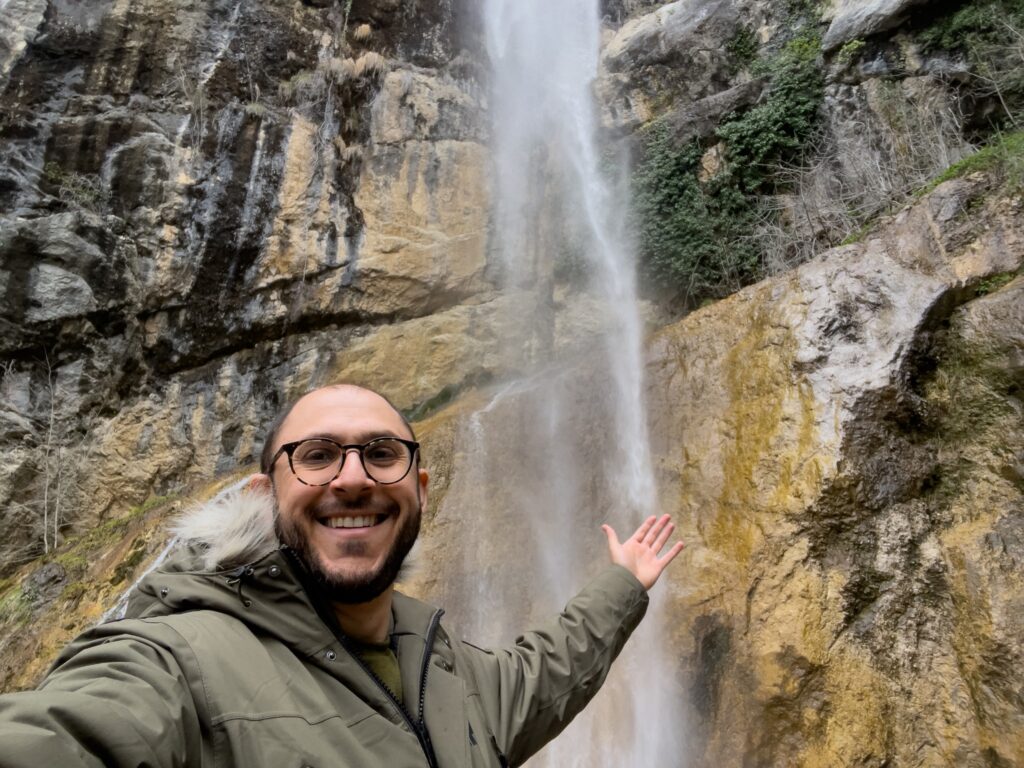
Remember to Play
As adults, the world becomes more and more serious. Our obligations grow greater with every passing moment. As we become more adult, it becomes so easy to change our play time from just that – play – into refining or working on a craft. The two are similar, but there’s a level of intentionality in the craft, vs. carefree exploration in play – that I think are very different.
The two work side by side to help us and invigorate us. Play often requires honing skills and acquiring knowledge – but it’s more than just that. In the context of a video-game, simply working on honing a skill or craft would be the player who gets pleasure from the status and reward via the sense of completion. They are purely focused on the most efficient way to grind through the levels. In contrast is the player who enjoys the journey, who embraces the inefficiency, and who relishes the side quests and distractions along the process. The player who loves to play.
I was reminded about this distinction several times this past week. I ran into a friend in his late 40s. When I asked how his weekend plans had been, he said he’d just bought one of the major Lego sets. His eyes lit up as he explained the setup he had in mind and the work he was doing to assemble and tweak the kit. He was filled with pure playful joy. During a conversation with a different friend about hobbies and projects, he bemoaned his lack of side projects. A sentiment I hear quite often. But, it’s one that I think is a shame because it speaks to choices that lack opportunities to tinker, to experiment, to randomly play.
So, take this as your reminder – or nudge – to start changing how you see the world. To embrace opportunities to play, and to nurture new ones. Don’t limit yourself, don’t get lost in the logistics or semantics and grind. Just play, nurture your curiosity, doodle, create, build, make airplane noises as you bike to work and laugh at the nonsense of it. Embrace and laugh at the journey as you go. It will bring richness and joy to what you’re doing and help you thrive in other parts of your life.
Working to Avoid Stress Burnout
Surrounded by incredible, talented, brilliant, successful people, I’ve seen a large percentage of friends in the latter half of my 30s go through moderate to severe burnout. As talented knowledge workers and over achievers I think the vast majority of us have brushed up against the ragged edge of going down with stress or burnout – even if we didn’t realize it at the time.
The most compelling research I’ve seen suggests that more than specific workload of tasks, one of the greatest predictors of a catastrophic burnout is prolonged uncertainty and ambiguity. Through introspection, and a large number of conversations with friends at every stage of the process – from the lead up to, denial, midst of, and then recovery – I’ve come up with two dimensions of thinking about work/life balance that help me and seem to help friends.
The first is one I use and reference often: That’s the well worn idea of sand in the shoes. Anyone who has walked on a sand dune or on the beach with their shoes on will know this to be true. At first it seems relatively easy. But, the more you walk, the more each step flicks a few grains of sand up and into your shoes. A few steps more, a few more grains of sand. Before long, that easy walk seems anything but. Your shoes are much heavier, much less comfortable, and when you eventually tire and pause to take them off and pour them out, half the sand dune dumps onto the ground. It doesn’t matter which adage you go with – death by a 1,000 cuts or shoes full of sand, it all gets to the same point. There is a cumulative power to things and context matters.
The second is a bit more novel. Most of us talk about our energy – social or otherwise – in the context of a battery. But, when I thought about recharging my energy level and everything it takes to make that happen, I realized that the analogy was doing a poor job capturing a challenge I faced. Sure, I could take a weekend or a week away to “recharge my battery”. It did the trick – partially. But, I noticed that there was a key lack of resiliency in that recharge that was not reflected and was in some ways actively misleading. It’s that feeling of – “How can I be tired or stressed or exhausted – I just got back from a week of relaxing and couldn’t sleep anymore!” A sentiment that I’m sure is a bit familiar.
This is where I started to think about it as two different batteries (it may have been novel, or may have been something from the Knowledge Project or a like-kind podcast). Of these two batteries, one is a smaller quick charge battery. It recharges quickly, it’s perfect for day-to-day, and weekly activities, and it’s the one we use the vast majority of the time. This quick charge battery is the one that a good night’s sleep or long weekend can recharge and it’s the battery that is most visible to us.
The second is a very slow charging, high power, backup battery. That auxiliary battery is the one we turn to when we’ve drained the quick charge battery, or when we have a mountain to climb, or a marathon to run. It’s a big battery and it’s slow and hard to drain. But, it’s also very hard to recharge and can’t be recharged in the same way. The fact that recharging it is so difficult and takes an entirely different approach is significant.
So, how do these two interplay? In our day-to-day lives, work and otherwise, we operate off of the quick charge battery. A particularly socially draining week or a small project at work that runs over is no problem. When the quick charge battery is running low, the backup battery picks up the slack. And it works great. We then wrap up the big project, take some time to recharge, and we’re back in action.
The problem comes when we run that battery down and it moves from green, to yellow, to orange. We’re so used to having the battery there supporting us, that we never recognize that what we think is a yellow is probably an orange, and an orange charge, is probably red and on the cusp of an empty battery. We also make the mistake of assuming we can recharge that battery easily and in the same way. And the unfortunate reality is, that once we’ve run that battery down the quick charge battery ceases to function properly as well. It’s when people collapse. It’s why they go down hard, and why the recovery from stress lasts anywhere from 8 months to two years.
So, what helps prevent that? Thinking of the two batteries operating in tandem. Being mindful that it’s OK and you shouldn’t expect a week of relaxing to fully recharge you after a period where you’ve heavily used that deep charge battery. More than that, use it as a lens to understand why you can take a few days off, be refreshed and restless, but still be drained. Also, use it to check in with yourself – how the activities in your life are using your batteries and where you’re drawing energy. Are you the type that subsists off dipping into that deep charge battery all the time? Could you dip into it more often?
And then, consider and be intentional about how you protect and make time to allow for that gradual recharge. For changes, temporary or permanent, that allow you to funnel the trickle of energy to protect and power that battery in a give-and-take pursuit of balance. Doing so not only ultimately helps make us more resilient – it also protects us from injury and harm in a physical, professional, and relational sense.
Contrarianism Without Integrity and Creation is not Innovation – It’s Merely Exploitative Extraction
Our conversation about contrarians is not only deeply flawed, it’s intellectually dishonest and structurally corrosive. Over the last several decades the tech and financial sectors have seen the rise of a predictable class of parasitic individuals who rail against the establishment and claim to be great contrarians. They derive their success – and that success is often significant – through contrarian acts that go in the face of the status quo. The system, they say, is dumb, it is weak, and only great minds are positioned to have the innovative mind to drive change and create opportunity.
These individuals set themselves up as individuals in the contrarian tradition, who have gone against the status quo and changed the course of history. People like Galileo, Darwin and Einstein. But, they rarely have anything in common. Today’s contrarians like Thiel and his disciples, most of whom hide behind a false application of libertarian ideals, are not great innovators who have achieved a profound insight and used that evidence to drive innovation and correct flawed ways of thinking. They’re highly intelligent parasites that leverage the idea of being contrarian to justify and distract from actions that are instead purely exploitative.
If all society is fundamentally facilitated by some degree of collective trust, then there will always be inherent opportunities to exploit that trust for personal benefit. Particularly if you operate in a gray zone that is not sufficiently overt in its violation to collapse the system or elicit a corrective response (eg commit armed robbery), but allows you to exploit the system. Similarly, your willingness to violate the norms that allow that system to function and exploit that is not a beneficial skill or trait. It is a predatory one.
To illustrate this, I want you to visualize one of those free libraries that people sometimes create. A lovely small nook in a shop, or along a road, where you can leave a book or two and take a book or two for free. There is no regulation, restriction, or control outside social norms, practice, and trust. The system works because the vast majority of individuals act in good faith supporting the continuance and healthy growth of the system.
Enter the predator. Where the others have seen and engaged in a collaborative effort. The predator claims “Hah! How foolish and silly.” He sees opportunity for self gain, and because there are no legal limits on who can take a book or how many, he takes the entire library, emptying it into his truck. A few feet down the road, he sets up his own stand and now sells those same books for $1 a piece. He may then go on to sell all the books and claim himself a great business man and financial success and yet – he’s broken the very system he critiqued as foolish and was required to achieve his success. The free book exchange is broken. Unless, of course, he’s able to wait for it to be reset before he can swoop in again to restock his own store.
There is nothing about his success that stems from his own merit. It is purely his willingness to exploit and violate the system, the very system he’s critical of because of the ability to exploit it, that allows him any measure of success. As a result, his success is entirely dependent on future exploitation.
These individuals hide behind the false narrative that they drive efficiency, that they embody capitalistic values, and that the are engines of disruption and innovation. Each of these is largely false. They are not operating in a capitalistically grounded value exchange. They corrupt and destroy functional and highly valuable systems while extracting inefficient but concentrated value and they foster inefficiency because the only solution is increased regulation, reduced trust, and direct oversight which they in turn rail against because it limits their ability to act.
So, when you see someone held up in modern society as a great contrarian, I hope you’ll look deeper and ask yourself – is this someone worth admiring? Is this someone worth celebrating who is moving society forward to new levels of science or innovation? Or is this just a pathetic crook who owes their success and wealth to masquerading as a contrarian. Look at what they’re attacking, what they’re railing against, and their narratives surrounding their own success. Time and time again you’ll see that their success is entirely based on their exploitation of the systems they rail against. That they create little real value, and are enormously detrimental to everything they profess to support. You’ll also see them react most strongly to anything that seeks to hold them to account – not out of a desire to spur their own innovation, because they have none, but rather to protect their ability to exploit the gray areas.

Flawed Incremental Thinking is a Gateway to Enormous Harm
On the topic of substance contained in arguments, I’ve come to see a large part of people’s susceptibility to right wing narratives and conspiracy nonsense through the lens of an inability (or at times refusal) to carry out multi-dimensional analysis and thinking and to force coherence. The allure and sweet spot for Rogan, Peterson, Trump etc. is in bombarding us with a stream of individual statements that sound compelling or reasonable in isolation.
But, there are a ton of of key issues with this approach and these statements. Most, quite simply, just don’t hold up. Others have huge issues if you consider them in a wider context. There are either major contradictions, the statements are flat out false, or they are based on false narratives and premises. Then an entire worldview or argumentative chain is built on that false initial premise.
While we all have our cognitive biases, there are clearly groups that have an increased susceptibility. When we look at the current cultural discourse, you have individuals who are very susceptible to this type of narrative in conflict with those who are resistant to it. Interestingly, super narrow highly intelligent folks and relatively low IQ folks both tend to fall into this category for opposite reasons but due to similar blind spots. One group has deep arrogance and stealth insecurity stemming from their level of expertise in a narrow area. Mastery of cause and effect in that narrow context can lead to a blindness regarding the complexities of the wider landscape and interconnectedness. The other group is broadly confused by how the world works, overwhelmed by cause and effect, desperate for a sense of control and empowerment, and lacks the breadth of knowledge and mental compute power to evaluate the multiple considerations simultaneously.
Malicious and exploitive influencers capitalize on these behaviors by gradual incremental nudging. I think of it a bit like when you’re wiggling a car or dresser. As a single individual it’s impossible to walk up and just move one of these objects. However, you can rock/wiggle a very heavy object and “float” it to the total opposite of where it started with small nudges. Each incremental nudge doesn’t feel like much of a change, but cumulatively can result in quite drastic changes quickly. If you purely look at the dresser or car you’re convinced it hasn’t moved. But, if you take in the wider setting around it, you can notice the change. I talk about this as “if, if, if, if, if” (fragmented thinking) vs. “if, but, and, then. If, but, and, then.” (contextual multi-dimensional reasoning). Conspiracy theorists, Rogan, Peterson, Trump and the like, all operate heavily in an if, if, if, if narrative universe. If they resonate with you consistently, you’re also probably operating in that type of thinking. Digesting each argument – each ‘if’ – in isolation. This allows for the feeling of being critical, without actually being critical in a functional way. It also opens the door for a proliferation of contradictory positions and beliefs.
With this, I don’t mean to imply that sound reasoning and decision making is limited to broad highly intelligent and average IQ folks. Rather, that there’s a certain inherent priming effect and bias that is more likely and seems to self sort. Overcoming that means acknowledging our biases and tendencies, and then working to overcome them. A bit like putting on a pair of glasses if your eyesight isn’t perfect. There’s no shame in needing the glasses. But there is a definite cost and shame if you need them, but choose to drive without them anyhow.
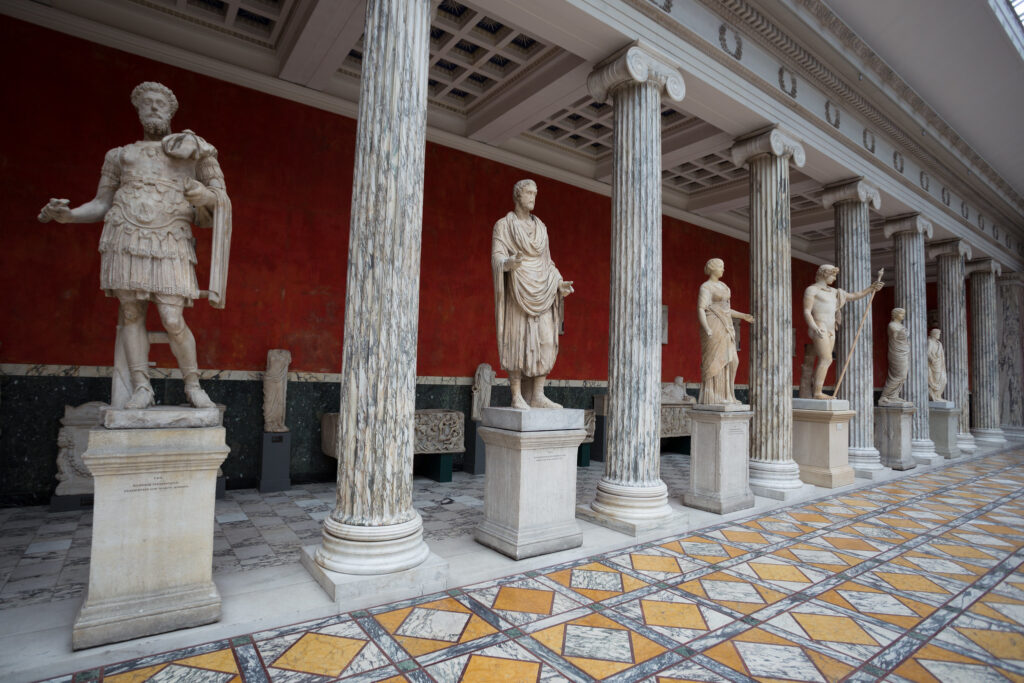
Consistency and Coherence
Broadly speaking, I’m of the opinion that the current obsession with stoicism is widely abused and misused / cherry-picked for convenience. But, in the context of worldview and aspirations, I do find it a useful lens to surface a core piece of my value set. I believe deeply that the full span of an argument or belief, its context, and its outcomes have to be coherent. When we act illogically, we must honestly acknowledge it instead of covering it up with excuses or performative rationalizations.
If we look at this through an overall stoic lens, there are a few key principles: consistency in internal narrative (logic and coherence), consistency in external actions (virtue and pragmatism), pragmatic accuracy and realism, and avoiding contradictions to achieve eudaimonia (flourishing).
As I choose to apply this, it goes back to elements of the “if, but, and then. If, but, and then” way of thinking I talked about in the previous section. I ask myself: does this new piece of information support or disrupt my existing internal narrative? And if so, is it accurate? Does it reflect a realistic view and critique in good faith? And if not, then how do I update those beliefs to avoid contradictions — with a focus on accuracy based on what has come before, what is visible in the moment, and what are likely possible future outcomes?
Ultimately, this gives me a much clearer lens to see the world through and to adapt to the world as it evolves. It helps me make more accurate decisions while also helping me ensure I have a consistent and deeply supported worldview and belief system that is fully aligned to reality. In this way, it’s a blend of evolutionary theory, stoic philosophy, and anthropological reflection operating in tandem.
If I map that to how I then experience some conversations — it’s a bit like having a set of blocks with incremental numbers on them. The task is to line those blocks up in ascending order from 1–20. If you understand that the end goal is 1–20, and that each block has to be incrementally lined up, it makes your overall analysis much easier. But folks who only look at one or two blocks at a time are likely to jumble the order and its placement. Meanwhile, others who incorrectly misread a 6 as a 9 and become ideologically attached to that error are doomed to create entirely different orders to affirm that choice.
The greatest challenge — but also constant opportunity for growth — with this approach is in how we approach uncertainty and bad outcomes. Telling ourselves a convenient lie, or rewriting history to excuse or justify a failure or bad outcome, is far more comfortable. While becoming comfortable with the things we don’t know, honing the skillset to effectively seek out answers where they’re available, or updating our mental models to account for that uncertainty is something that requires work, internalized self-confidence, and maturity.

Empathy as the Source of Morality
Given the wider context of the principles they stand for, and the agenda they’re attempting to put forward, it isn’t surprising (but is disappointing) to see empathy being attacked right now. While these anti-empathy narratives are coming from grifters and predators posing as innovators, clergy, or intellectuals, the sad reality is that their assault on empathy will resonate with those who either lack integrity and a deep moral fabric, or who fail to understand the pivotal role empathy plays in civilization.
I believe that, as individuals, we have to make a choice. Are we going to be moral individuals and live moral lives, or are we going to pay lip service to the performance of morality while exploiting the nuances of dogma to empower our own self-interest? I also strongly believe that we need to aspire to be as consistent and coherent in our approach to morality as possible.
Contrary to how we often discuss it in society, I found religion was (when it is at its best) an intermediary and translator in that journey, not the source. At the end of the day, those who are critical servants of the truth find their way to some formulation of the golden rule — do unto others as you would have done unto yourself. Not, as is often misapplied in the form of its immoral cousin — do unto others as you believe they might do unto you, – do it first, exploit weakness, and relish any benefits you can secure.
But, what’s the root of the golden rule? What makes it universal, powerful, and something that moves beyond our familial groups, social groups, religious groups, natural groups, and species? What simultaneously holds an accurate explanation for both non-theistic evolutionary evaluation and religious dogma?
That is empathy. The root of cognition. Our ability to not only have a thought, but to be aware of our place in the world as actors in it, while simultaneously co-sharing that space with other creatures. This means that morality, at its core, emerges from empathy — our uniquely human ability to recognize ourselves as conscious actors in a shared world and to imagine the experiences of others. From this foundation, moral action becomes a process of minimizing mutual harm and maximizing shared flourishing through honest, relational awareness.
So, while your god and religion may serve as translators (or perhaps you may believe originators), the single greatest way to evaluate the relevance and authenticity of that translation and narrative is simple. It’s to hold that up to a critical and honest analysis and to ask — how does this action impact me, what does it cost me, how does it impact them, what does it cost them, and where is the midway point that reduces the maximum amount of harm, allowing us both to thrive.
In a predictable but comical twist; if you earnestly apply first principles (which folks like Musk are constantly giving lip service to but failing to apply) to questions of morality, you end up with empathy. The catch here is that empathy-derived morality is more likely to require compromise and to challenge individuals who are either in a dominant power position, or who are exploiting the system and their advantages. When you add in layers of authority, in-group dynamics, and identity, then you can quickly claim moral superiority or corrupt and co-opt themes in the name of personal gain.
In short, the more excessive and unchecked my success, the more there is a requirement for self-enforcement for moral action or the need for social intervention to force moral action. Which is where the mechanism of religion, government, or constructive social movements come in. After all, what is religion if not a moral framework for guidance and enforcement?
It isn’t a coincidence that individuals who dislike being told no, who reject the idea that they may enjoy some sort of preferential benefit and status, and who actively want something that significantly harms or disadvantages others, will reject the concept of empathy. In the same way, these same individuals give lip service to being ardent defenders of free speech when it enables them to overreach or secure personal advantage — but are always the quickest to bar actual free speech when it is critical, inconvenient, or detrimental to them.
This is also where the previously mentioned point about limited incremental thinking comes in. If you’re operating where each action or point is considered without broader context — there’s minimal differentiation from a critique of one set of advantages or behaviors or limitations and the sum of your experience. If you’re operating from a place of contextual, multi-dimensional reasoning, that’s not an issue because you’re mindful of the full picture. In that context, I can see and understand clearly that two things can be true, e.g., I can be a white male who benefits from a wide range of advantages. But, I can also encounter many individual situations where more narrow limitations or hindrances do not seem fair. It is not only possible but inevitable to have advantages, and still struggle. And yet, when we foster a more equitable and inclusive outcome for everyone participating in good faith — we all collectively benefit through a multiplier effect.
This is where the message being fed, especially to white men, currently by self-serving influencers, corrupt fundamentalists, negative role models, and purveyors of bullshit, cherry-pick, distort, and rely on sloppy and incomplete narratives to facilitate grift, abuse, entitlement, and attacks in deeply unethical and immoral ways.
I also find that those individuals most prone to exploiting empathy and criticizing it are often the ones that are most prone to demand it and most likely to lash out when they don’t receive it.
Ultimately, fostering an honest and coherent conversation with yourself and your peers about empathy and coherent behavior is a lens which I find an essential tool for acting with integrity. As I wrote in my 37th birthday post, “Aspire to Lookback with Pride” using this lens consistently fosters a level of integrity that I hope my 100 year old self can look back on with pride.
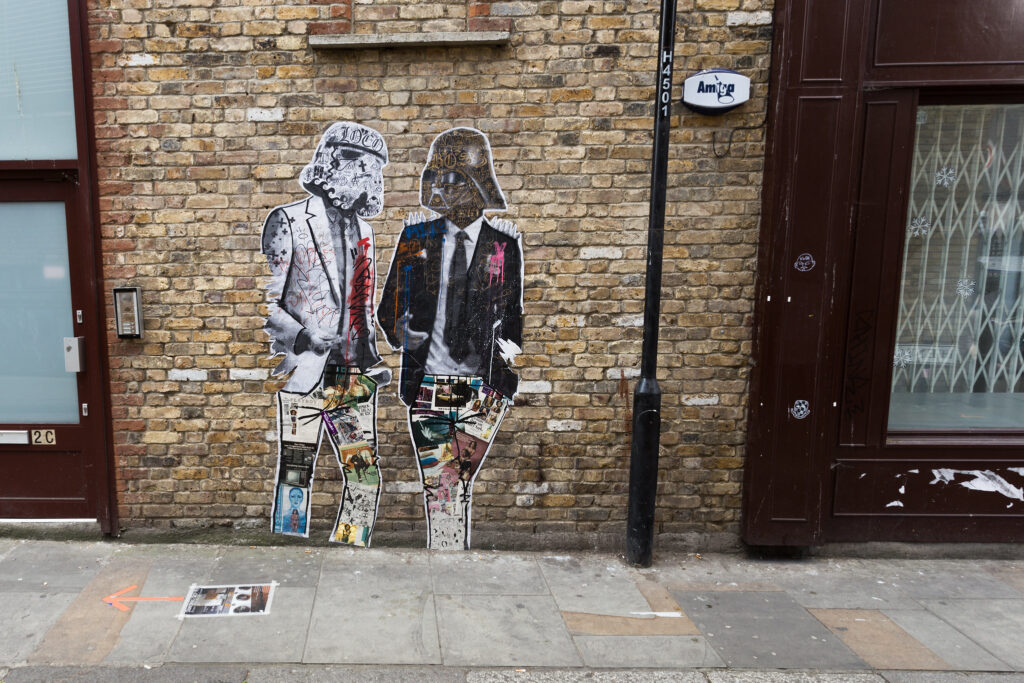
If it was Another Decade, Who Would They Be?
I’m increasingly making the decision to end relationships based on insights into individuals’ character and values. Support for the MAGA movement, and the GOP in its current form, has become a litmus test that goes far beyond a misalignment in basic political policy preferences. This increasingly has deep ramifications for relationships more broadly and is also reflected in the data we see about the gender divide in dating in the US, and the choice by a growing number of women (predominantly but not exclusively) to leave existing relationships which are no longer compatible. While this seems drastic and severe, it’s actually far more reasonable the more you look at it. I now ask myself — knowing what I know about this person, and the values they’re both endorsing and OK with — if it was 1920, would this person have been a card-carrying member of the KKK or a kindred organization?
But first, let me elaborate a bit on how I got to that point. While I see history and social movements as a pendulum that swings from side to side, the nature of those swings and the good or bad that comes can be small or it can be enormous. While progress itself over time is almost guaranteed, the speed of that and the recovery after a major setback can take lifetimes. And yet, it’s also important to look back through history and to draw key lessons from it while also using it as a lens for better understanding today.
No two moments in time are ever identical, just as no two social movements are. The nuances of a society — of global technology, population numbers, and knowledge — are always evolving. And yet, we are basic animals — creatures of habit that tend to repeat the same mistakes.
Donald Trump was 18 when segregation ended. He was 20 when interracial marriage became legal. For young and middle-aged people in the US, it’s easy to forget that the older generation in the US spent their formative years in a country that was undergoing drastic change — one that was also profoundly racist, and that racism was baked into the institutional apparatus.
A few decades earlier, during the first quarter of the century, as much as 40% of white males in some states were KKK members — a figure that has, sadly, gained renewed importance.
As the far right and fascist/nationalist groups have hijacked and re-formed American conservatism in their own image under the MAGA movement, we’re seeing a re-litigation of the toxic, hateful, and vile rhetoric and policies that had been banished to all but the fringes of society over the last half-century.
But as the MAGA and other racist, nationalistic platforms around the world find renewed success and support, two important things are happening with a subset of the population —
- Individuals who are not overtly racist, sexist, bigoted, or prone to fascist principles have been co-opted into the movements, radicalized, and nudged into tolerating what would have been reprehensible even a few years ago.
- Individuals who have always been deeply racist, sexist, bigoted, or prone to fascist ideology are now feeling empowered and emboldened to de-mask.
Of these two groups, the first may be redeemable — especially if you take into consideration the nudging effect and some of the radicalization traps I talked about earlier in the post. The second is an unmasking, where we see individuals’ true selves — what they’d have always done or believed when no one was looking. But in both cases, the outcome is largely the same: these individuals have made a series of value-based decisions on what matters and what does not to them. And they are enabling and facilitating gross levels of harm and injury.
Simply put? If a friend and I were teleported back to 1920 and that friend chose to join the KKK — I don’t care what mental gymnastics they use to justify why they joined. You can almost hear it, right? The disingenuous, “I don’t believe everything they stand for, but they’ve got some pretty good ideas in a few places, and the social events are great and that’s OK.” They were still an active and participating member of the KKK. And would that be a deal breaker for you? It would for me.
So — today, the name of the movements has changed. The terminology they’re using has been carefully laundered and repackaged. But the principles are the same. And the individuals that think that is not only OK, but who are actively facilitating it, are telling me what their true character is. How they’d act when no one was looking. How they see the world. How they choose to engage with the world.
If a crime is committed — a bank robbery, or an act of premeditated violence — even the driver who stayed in the car shares guilt for the crime. Continued support and facilitation of hate-filled, morally reprehensible acts shares complicity in the act. To tolerate and empower sexual predators, criminals, bigots, and racists is to share their evil even if you don’t practice it yourself. And to continue to do so — even worse, with zeal — in the face of constant evidence is, for me, to cross a line in the sand and show me your true face.
Continuing my Critique Around the Toxicity of Rogan, Peterson and Others
In my 38th birthday post I spoke about the allure of conspiracy and the toxicity of Rogan, Peterson and those like them. Since I’ve delved a bit deeper in this post in related topics, and since we’ve now seen the continued deterioration of these individuals’ coherence and more clarity about their actual positions, I also want to share a simplified way of thinking about it. Over the past couple of years the response has often been – “Sure, sure, they say some stuff that’s quite toxic or flat out false – but other parts are just fine, fun or really useful”.
If you want to understand the real harm you’re doing to yourself with Rogan etc. here’s a fresh way of explaining the problem which I hope makes identifying the risk and threat more accessible:
There’s a restaurant in town. That restaurant is owned by the chef who is also the cook. The Chef chooses the dishes on the menu, orders the ingredients, preps them, and cooks each dish. He’s also, by all accounts, very good at what he does. BUT, the restaurant comes with a few added rules. Somewhere between 30 – 70% of the entrees will make you ill or harm you. This ranges from a little stomach unrest you barely notice, to straight to the hospital for antibiotics. The remainder of the dishes are Michelin level. The menu is blinded, and you don’t have any idea what you’re ordering or going to get. The chef? He claims it’s not his responsibility, and that he’s just a purveyor of a space and service for flavors. The illness comes from a mixture of things – hygiene, expired ingredients, parasites, or outright dangerous ingredients like fugu. The place is super trendy, the plating for all the dishes is fantastic, and the food across the board tastes really good.
In these situations someone like Rogan or Peterson is the restaurant owner and chef. Each dish is an episode or an interview. And you’re the diner repeatedly eating at the restaurant.
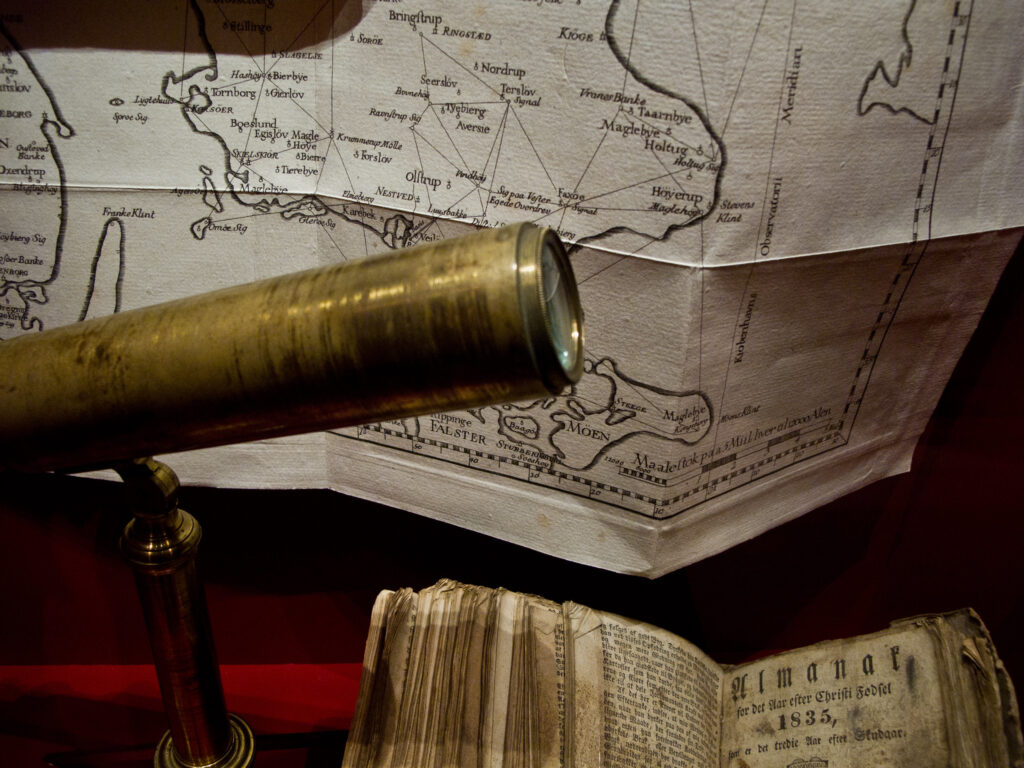
ChatGPT (and others) as Great Sparring Partners
Even as I assemble this post – a string of thoughts and observations drawn from what I’ve been thinking about this past year – there are periodic statements or points I want to validate. Has the explanation I’ve written about stoic influences accurately reflected a coherent application? Do my historical parallels make sense and are they accurate or misleading?
To this end, the power of ChatGPT is in the quality of your prompt and using it as a hybrid search tool and editor all at once. As the old saying goes – garbage in – garbage out. To that end, it’s essential to avoid confirmation bias in how you structure your prompt. And in some cases, that means a prompt, to prepare your prompt.
If I want to double check and ensure that I’m making a coherent or fact-based argument – it’s essential that I also act in good faith and with intentionality when structuring the prompt. I do this by keeping my prompt relatively neutral and open. I don’t want to guide it to a conclusion. In this way I want to use open vs. definitive language. Such as “Is it true that [point] is true, what evidence supports this claim and what are potential contradictory arguments?” vs. “This [point] is true, give me reasons”. I can also invite it to feed me information, but have to be careful and critical in what it shares. Let’s say I’ve heard a conspiracy and want to check on it.
I might ask – “I heard a conspiracy that the earth is actually 6,000 years old. Is there any evidence for this?” After reviewing the response, I might further ask “Elaborate on common arguments used to justify the conspiracy and provide me a refutation where one exists. Flag any that make strong or compelling arguments and are not refuted by current evidence.”
Try the two prompts above yourself – and see what the responses look like.
If I know what I’m asking is a bit contentious or tends to have a lot of disinformation or misunderstanding around it – I’ll also ask ChatGPT to help me refine it. I might ask it, say “I want to have the most accurate and factual answer possible. Please provide suggestions on how to improve my prompt or further clarifications that would help me reduce bias.” and the other trick I use regularly is to ask it, “To your point about the historical framing. Help me strongman my argument and provide 5 points of evidence that confirm my narrative, and 5 (if they exist) that show it is historically misplaced or inaccurate.”
Ultimately – I find that in its current incarnation ChatGPT / Perplexity / Claude can be great for this. If you’re in the US Google’s Learn About is also fantastic. These are great tools for honing and fact checking your world view, but they’re also an amazing tool for checking statements made on things like podcasts and youtube videos.
While largely true now – this is unfortunately also where one of the next digital misinformation wars will rapidly emerge. Both in shaping the data set, but also intentionally overwriting it and biasing it as opposed to efforts to counteract or neutralize/minimalize bias. Musk and influencers within the disinformation wing of the far right ecosystem have already stated that they’ll aim to modify LLMs selectively. We also know that China has actively added censorship layers to remove certain topics or events. Ultimately, this will be the biggest threat to the value of LLMs and is likely to pose an even bigger threat to our societies and democratic societies than engagement algorithms. Not because of an inherent bias in the technology itself, but because bad actors survive off of co-opting and corrupting high utility tools, capabilities, and services.
Ask vs. Guess Culture
I stumbled on this concept earlier this year and have found it to be a fascinating insight into individual communication as well as cultural behavior and clashes. It draws in part on high-context vs low-context communication but is a bit more nuanced and sophisticated.
In essence the concept posits that you have a spectrum. On one end you have cultures that approach an ask as an inquiry, not a request. As long as it’s equally ok to refuse a request as accept it, there’s no harm in asking the question. These are also often more low-context cultures, where there is a focus on directness and low-context communication. On the opposite end of the spectrum are guess cultures – these treat an ask as a request, not an inquiry. This implies an expected obligation to say yes, and conveys the association that the asker believes the answer will/should be yes. This approach is far more common in high-context communication, where things like social harmony, and indirectness are present.
Different regions have different cultural norms – with some being very ask-oriented, while others are deeply guess-oriented. But, even beyond that, as individuals we have ask vs. guess personalities and preferences. These often manifest in how we communicate in our relationships, what careers and job roles we’re well suited for, and can be a significant source of miscommunication and misalignment.
I’m definitely much more on the guess side of the scale. As a result, I find this as a thought exercise and check-in tool can be fantastically useful. Both in helping me avoid miscommunication or ambiguity when engaging with people or cultures that are more ask-oriented. While also helping me to identify and be mindful of where I may be overlooking important considerations when dealing with fellow guess-culture people. It also helps me calm my immediate reaction, potential indignation, and sense of conflict when I receive direct asks that take me off guard or feel like significant overreach – remembering that it may not be exploitative and may just be a neutral inquiry.
Where do you fall on the spectrum of ask vs guess? And what sort of culture do you come from, and exist in today?
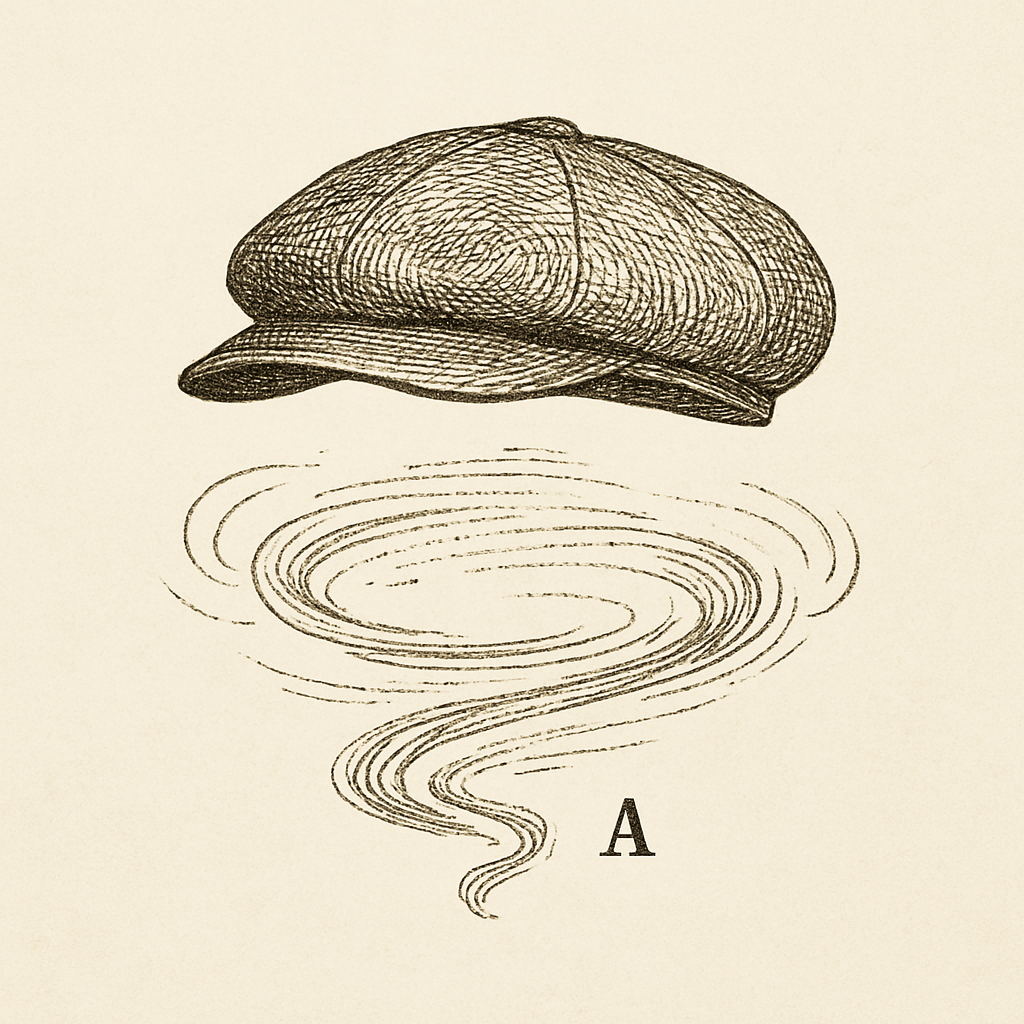
An Update on Past and Future Books
It’s truly hard for me to believe it was 2017 when I wrote and released Practical Curiosity. In so many ways it still feels like I released it yesterday or just this past year. And yet it is rapidly nearing a decade since I first clicked publish, filled with fear it wouldn’t be liked or resonate and would be rejected.
Since then, the world has changed a lot. I’ve changed a lot. And yet – with a few small exceptions in several of the chapters, I still believe it is as relevant and valuable today as it was then and that is has held up extremely well.
This past week, I woke up to an interesting surprise e-mail. In it, Amazon – who I self published with – have extended an invitation to be an early adopter of a new AI-voice generated audiobook service. I was a bit skeptical, but I’ve long wanted to have Practical Curiosity be as available as possible. So – I’ve given it a go and while there are hints of it being an AI generated voice, I am massively impressed by the job they’ve done.
If you want to check it out, it’s available for $4.99 or included in Audible’s normal subscription coverage. The landing page for it is HERE and it should also appear on the standard overview page. If you check it out, let me know what you think and as always – a rating and review helps/means a lot!
But, what next?
I’m excited to tease that I’ve got a new project in the works. For the last half year (and some change) I’ve been hard at work compiling and researching information related to Denmark which I want to make available to a much wider audience. It’s interesting, it’s funny, and I can’t wait to share it with you. There’s still a lot of work to do – but I hope to have it ready to go out before the end of this summer.
I’ll be self-publishing it again, though I do not anticipate it will have a digital copy. It is Denmark themed, but not a travel or photography related project. It will, however, include a series of visuals which should delight. Stay tuned, and I’ll aim to share more soon.
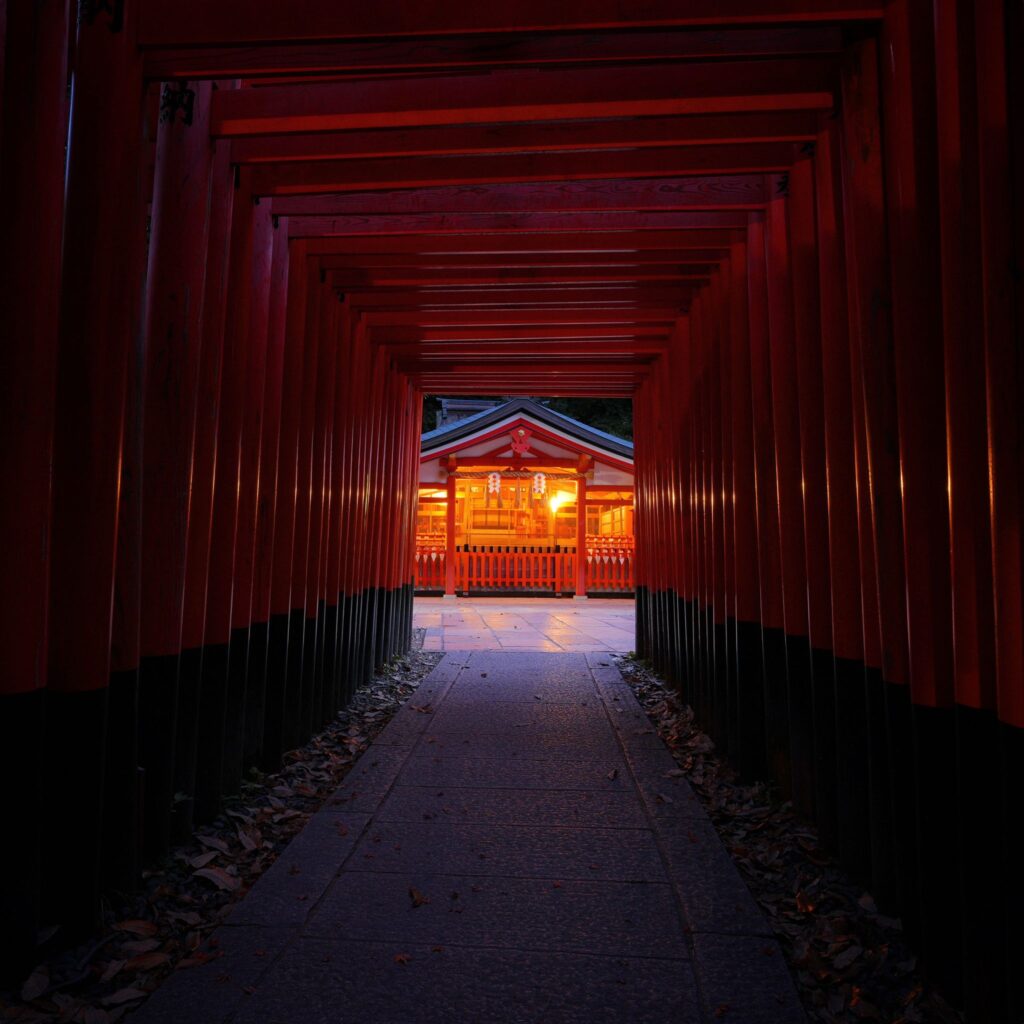
I Finally Made it to Japan – It’s Silly Why it Took so Long
Shortly after undergrad some 15+ years ago, several friends went to teach English in Japan. Their experiences were incredible. At the time, I was still deeply intimidated by Asia and focused much more heavily on continuing my exploration of Europe. I missed a golden opportunity and it is one that has nagged at me ever since.
At the outset, my resistance was three fold. It was the overall anxiety and misbelief that travel in Asia broadly would be difficult, challenging, with unpredictable stomach issues, and overwhelmingly paired with a general lack of interest. Over time, after my first visit that redefined my perceptions, I’ve returned to the wider region often and come to adore and be fascinated by it.
I also harbored a bias because of the conduct and association I saw surrounding a subset of western men who have always grossed me out. Apparently the Japanese now have a name for them – LBHs – or Losers Back Home. This subset of guys bring an extremely creepy energy and the exploitational vibe really shut down my interest in engaging with the plethora of subcultures tied to Japan. And, to be clear, I in no way mean that the friends / majority of people who adore Japan and its many fascinating sub cultures and foods. But, as a gamer and a bit of a nerd, that negative association always led me not to engage.
Third – I also constantly heard that Japan was brutally expensive and very difficult to engage with. The content I saw talked either of sky high prices, or 7/11s with very little inbetween. Of infrastructure jam-packed with people and tidy but overwhelming. This led me to prioritize other Asian countries, particularly focusing on southeast Asia where my dollar (or Kroner) gave me maximum bang for my buck.
That all changed this past December. Three days before what would become my departure date, I found myself with a block of time off. My brother’s baby was due the end of the month, and I knew I wanted to be back in Copenhagen. Meanwhile I had work deadlines that confined me to a narrow slice of time. Those 9 days were floating, teasing me, as I tried to figure out what to do – what would energize me the most – and where to go. As the start of holidays got closer and closer I was lost in indecision. The options available were either too expensive, didn’t excite me, or had painful logistics. I kept delaying.
Most people plan trips far in advance and pick a destination and work backward from that. I often work the opposite. I rarely know my destination more than a month in advance – and usually its just a week or two. I use Google Flight’s open explore map – add some criteria like dates, # of transfers, length of trip, and max cost and then start playing. Layer in exploring how I can use miles, or multi-leg trips and it’s a bit of a process but usually lots of fun.
That’s when a new special popped up with ideal availability – a direct flight to and from Tokyo from Copenhagen, priced at 50% of the normal cost on SAS. It made the transit a mere 12 hours and would allow me maximum use of my week+ off. It was a bit more than I had planned to pay for the week and a half, but it also excited me in a way none of the other options at my finger tips did. I hesitated. I slept on it. Then, I booked it. My departure? A day and a half out.
I worried the December 7th trip would dump me in a frozen, snow covered Tokyo. That it would be expensive, grey and cold. And yet – I was excited. I was curious – I was finally going to get a brief taste of Japan and see Tokyo for myself. Oh how wrong I was! Admittedly, I got lucky. It was abnormally warm and that meant the leaves were delayed by 2 weeks and still in the final throws of their autumn glory. The days were crisp but gorgeous and the weather was fantastically kind to me.
As is so often the case – I was once again reminded that my perceptions, fears, biases, and expectations were everything but accurate. What followed was an amazing trip, that was ripe with beauty, adventure, and sparked my curiosity. Japan won me over completely, and spoiled me in the process with its unique charm. All via the most brief of glimpses – after all, what is 9 days in two cities?
So here are a few things that stood out for me:
It wasn’t nearly as expensive as I feared
There’s no question that Tokyo wasn’t cheap – and I have to remember it was off/saddle season. But, capital cities rarely are. I don’t require much from accommodation, and I prefer a grungy hole in the wall restaurant over a fancy meal on most days. During the week days I found a hotel room for about $80 a night. On weekends that spiked to $120. They weren’t incredible or in the hip districts, but they were conveniently located not far from the Kanda station. Later, when I got to Kyoto I had a similar accommodation for $40 a night.
The fast train between the cities was pricy – 2 hours for about $90. But even that was far from unreasonable. Food in the restaurants also ranged widely. A large delicious bowl of Ramen for $8, or Chicken Katsu and rice for $4 – far from unreasonable. Of course, there were many other options that were much more expensive, much fancier, and everything that goes with that as an experience – but I ate. And ate. And ate. And enjoyed enormously for less than I pay for daily lunch and dinner here in Denmark.
The metro transit system in both cities was also easy, convenient, and with data on my cell + the Suica card added directly to my Apple Pay made moving around a breeze.
Building in the valleys not the mountain tops or hillsides
When I looked at the Tokyo region during scouting on Google Maps – I saw what looked like a thick network of cities heavily connected by major arteries. I expected as a result the nature to be scarce, heavily intermixed with buildings and human impact, or where it was preserved and protected – that it would be extremely intentionally manicured and feel like a giant park.
And yet, during my 450km journey from Tokyo to Kyoto I saw something very different. Sure the towns and infrastructure were everywhere. But it looked and felt different. That’s when it clicked – the hillsides – they’re largely left preserved with most of the construction confined to the lower 1/3 and bottom of the valleys. The nature was everywhere, it was wild, and the mountainsides were largely pristine. Much more than you’d see in most European or American areas that close to major cities.
While I can’t speak to how the rest of Japan is – or why they do it this way, it stuck out to me as unusual. Is it due to the history of earthquakes? A regulatory consideration? Tied to the climate? Just a cultural quirk passed down through time? Either way – I was deeply impressed by how verdant and extensive the nature was.
When I open up Japan on Google Satellite view and re-visit what I saw before, I can see it through an entirely different lens. My assumptions had filled in the gaps with inaccurate information. And now I can very much see the draw of Japan as a destination for rich nature that is well cared for, but still retains its wild spirit and essence.
Food….food…and food
I know. I know. Japan is one of the world’s great food destinations, so how did it still manage to surprise me? In most cultures and countries you have largely recognizable food paired with one or two more unique sub-genres. These sub-genres typically also have a dining method or type of establishment associated with them. Broadly speaking, what I expected to encounter in Japan was similar to that. Sushi places, steak/grill places, and ramen/udon places. What I was met by was a far more vibrant and diverse range of entire genres of food and dish. Not only that, but the establishments serving each have vastly different personalities and contexts with some being entirely novel to me.
I was absolutely blown away and in the time I had, only managed to try about half of them. Beyond that, the quality, mix of flavors, and range of options was extremely wide and varied. Portions were consistently very robust and the staff always welcoming and friendly.
The highlight was a small sushi place I found under the metro line near my hotel. Packed with locals, it was standing only. On my first visit an older gentleman who said he was in his 80s struck up a conversation and shared stories of his time in the US 40 years ago. Meanwhile the two chefs prepared delicious nigiri at $.80 a piece.
Another involved stumbling on a supermarket on my way home in Kyoto. As I looked around, I realized they had an extensive deli and sushi counter. At one point using my phone I asked the guy working the fish counter if the octopus tentacle could be eaten as it was (it looked boiled, but just to be sure). He gave me the thumbs up, then gestured asking if I wanted it sliced. Sure enough, a few minutes later he’d sliced and re-packed it, grabbed several chopsticks, soy to go, and had me properly equipped as I continued to pick and add a mix of sliced and fully prepared options. From there, it was off to the Deli counter where it turned out they had warm rice as well as some tempura. My god, I ate well and extensively when I got it all back to the hotel.
There were highlights, but throughout I never really had a bad dish. Well – maybe one – but the laugh and novelty made it worthwhile. In Tokyo, I had seen a number of restaurants selling skewers. I figured it was a grill and on first glance the menu looked approachable. I tried one place, but it was packed. Then I went to another around the corner, and figured – the menu looked (visually) similar in Japanese. Little did I know, it was a bit different, and the menu was almost exclusively offal which also surprised me initially as the place was about 80% groups of women eating.
I shrugged – I was already seated – too late now.
They served me cabbage and water as the appetizer/accompaniment. I picked my skewers – tripe, tongue, liver, heart and figured I was set. As I did, I noticed that “rectum” was also on the menu. As unappetizing as the thought of most offal is, rectum definitely takes the cake. I chuckled, I decided I was good, I didn’t order it. A few later, the waitress came up, profoundly apologetic and said they’d made a mistake and put the tripe in as rectum and asked if I wanted it. I said yes.
Sure enough – the rectum was one of the better sets of skewers. It was tender, less dry than the others, and the flavor was actually decent – somewhere between chicken skin and tripe. In the grand scheme of things, it wasn’t that the meal was bad – it was that the opportunity cost of it compared to the alternatives was high because everything else was so good. So, there you have it. That’s how I went to Japan, and ended up eating rectum.

Incredible colors
While I associate Japan with the spring cherry blossoms – I had no idea just how gorgeous the autumn colors can be. While the north was based in a thick layer of snow, when I arrived in Kyoto I was greeted by a crisp but vibrant landscape in the midst of the final throes of autumn. While the autumn colors drew their own surge in tourists and fostered a mini-high season, it was well worth it and the crowds were mostly confined to scenic overlooks – leaving me to wander the temples, and side roots in relative peace.
While I’ll let the photos speak for themselves, the magic of the trip was further enhanced as I ran head-long into autumn colors that turned the entire experience into one cinematic moment after another as I wandered through gardens, temples, and along rivers bathed in a sea of falling and fallen golds, reds, and oranges.
Wonderful hospitality
I mentioned above that I never encountered the dismissive or exclusionary experience others have reported. Instead, I found people friendly, reasonably engaged for a big city, and still very respectful of space.
As luck had it, I also had the chance to start on the right foot. My first night, jetlagged, dazed and confused, an old buddy from my ASU ballroom/latin/swing dance days took me out and introduced me to my first Izakaya. As someone who had studied in the US, then returned to Japan, he shared great insights while simultaneously helping me break that invisible barrier that at times can be there when I don’t know the protocol for how certain restaurants or cultural spaces work. We caught up, had a few beers, swapped stories from the last decade+, and I got the lowdown on the parts of Tokyo to see. I also learned that Tokyo has its own unique approach to pizza, which I’ll have to make a trip back to try.
It cannot be overstated how powerful and meaningful these initial moments can be. Years ago upon my first visit to Southeast Asia, a dear friend from the US but visiting her family in Vietnam took me under her wing. She blasted away my fears, preconceptions, and opened the region to me in a way that would have taken days, if not weeks, to do on my own. It was the same with Hiro and Tokyo. Our chat, our time spent sitting in the Izakaya, fielding some questions, and sharing parts of his city and culture with me – it made me feel welcome, comfortable, and ready to explore. It welcomed me, and emboldened me to continue to explore and discover without fearing a risk of overwhelm.
To be a host, an ambassador, and a friend like that is a powerful gift. It’s also something where you become a part of that person’s memory and relationship with the place and culture. Every time I think of Tokyo, I’ll think of how Hiro welcomed me and introduced me to the city. Every time I think of Vietnam or my first trip to Asia – I think of Thao. How powerful is that? And it is a gift I hope I have shared with others and will continue to be able to share with others when they come and visit either me.
A country regaining momentum
When I arrived in Seoul, South Korea a year ago I was surprised that the hyper-futurism that people talked about did not match what I saw. Yes, it was impressive. Yes, there were big screens and some cool automation. But, compared to other fast-paced capitals in Asia, Europe and especially what I’d seen in Shanghai and parts of Beijing it was underwhelming. In many ways, I expected Tokyo to be the grander flashier, and even more over-the-top version of this.
What I found was something that felt a bit different. In the architecture, infrastructure, automation, electronics, and things inbetween I certainly saw that advanced dimension. As a fan of scifi – you can see the worlds that are built with heavy inspiration from Tokyo. But. I also felt like much of it stalled out some 15-20 years ago and has just persisted.
That’s not at all to say things were not flashy and up-to-date. Rather that it felt like….like things had gone through a wave of wild innovation and investment and growth, and then stalled. That they had rolled along updating slightly, but without any major systematic change at scale. That the economy as a whole had stalled and gone into partial stasis. In many ways it mirrored the depictions in scifi – of techno-advanced societies that had then crumbled slightly. Think Blade Runner or 5th Element or Altered Carbon.
At the same time, I also got the feeling that Tokyo is coming out of that stasis and starting to race forward again. There were lots of commercial towers going up, there was a feel of innovation and change filtering in, and I got a sense from the city that it was re-finding itself. It feels like 3 or 4 years ago that really started to change and now what was planned or started is becoming visible.
One interesting example of that was the 60th anniversary of the high speed Shinkansen trains. As I stood reading the signage on the platform celebrating the 60th anniversary it was a bit shocking. When you think of Japan’s famous high speed trains, I often think of them as a quite new addition to the scene. Something from the late 90s perhaps. But, far from it. As I stood there on the platform, I recalled my Dad’s stories from Japan during his trip in 1969/70. As he took that train, down that same line – it was just 3 years old. A marvel of the modern world. Now they’re looking at ways to roll out improvements that will update the line and the trains.
It was a fun thought. And also fun to think some 50+ years later, I was there speeding across the Japanese countryside in his footsteps.

A final thoughts and gratitude
As always, I’m impressed that any of you make it this far. 12,000+ words and musings condensed into a chaotic melting pot of ideas and stream of thought is no simple undertaking to work through. But, that is a common thread – I’m once again so grateful to you all for the time you invest in engaging with me, for your support, your feedback, your energy, and everything inbetween.
This past year was a fun one, a challenging one, and one full of fantastic wins. What’s to come in the year ahead? Who can say. Hopefully many more fantastic travels – even as I write these final notes, I’m doing last-minute packing for a week in Iceland. More fun podcast and creative knowledge sharing opportunities. More wonderful deep conversations and opportunities to explore the future of technology and how we engage with our society. By this time next year, hopefully a new book that’s out in the wild. And I hope more time for exploring deep relationships and new possibilities. I’ve also been away from dance since September due to a knee injury – the longest break since I started in 2004 – and it’s something I hope to get sorted soon and return to. It has been too long and I feel it.
This past year was also a fantastic one from a professional perspective. I worked on launching one of the company’s largest releases in years and we had a fantastic launch. I built out the intro video introducing our SLT which played on a 16 foot screen to an audience of 600+ colleagues and kicked off our company summit. I continued to navigate the balance between work and life and I celebrated 10 years in my current company – a wild achievement that I am proud of, have learned a lot from, and never thought would be the way my career played out.
Until next year, may the roads open up for you.
